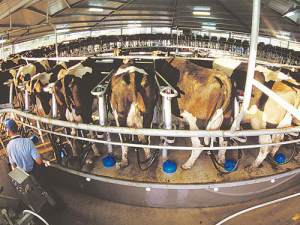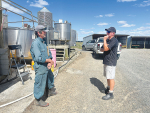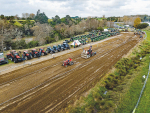The success of taking this approach depends on how long cows are milked OAD before mating. It’s important to note that the benefits of whole-season (or full lactation) OAD on herd reproduction don’t necessarily translate to the use of short-term OAD milking around mating.
Whole-season OAD offers benefits primarily because cows milked OAD from calving have a better energy status throughout early lactation. They achieve a greater body condition score (BCS) from about weeks five to six post-calving compared with cows milked twice a day (TAD). These effects result in cows cycling earlier (i.e. reduced postpartum anoestrus interval), a greater percentage of cows cycling before the planned start of mating, or fewer hormonal interventions (e.g. CIDRs).
Ultimately, more cows can be submitted for mating earlier in the breeding period, which can result in a greater number getting pregnant earlier. Over time, this can lead to a more compact calving pattern with an earlier mean calving date.
What about short-term OAD milking?
When considering strategic or short-term OAD milking, farmers would be wise to carry out an assessment of herd reproduction, such as a Fertility Focus Report, to determine areas for improvement and to evaluate potential solutions.
So far, there’s been no research to show exactly when a switch to OAD should occur before mating to have a positive effect. Research to date tells us that milking cows OAD for up to six weeks following calving before switching to TAD is not long enough to improve reproduction in cows that calved at target BCS. However, in a DairyNZ trial, cows milked OAD for 10 weeks post-calving started cycling seven days earlier and required fewer CIDRs than those milked TAD.
Still, it remains unclear whether shorter periods of OAD can improve reproduction when cows calve below target BCS or are underfed, resulting in poor condition during early lactation. It’s likely the switch to OAD needs to occur at least one month before mating to improve reproduction, and doing this from calving will achieve better results.
However, milking OAD for longer periods (three weeks or more) results in sustained milk production losses. Every farm is unique, and you need to weigh up the cost of lost milk revenue against the benefits (improved BCS and reproduction, and less pressure on staff and more time available for other tasks) before using this strategy.
• This article was originally published in Inside Dairy August 2017.









